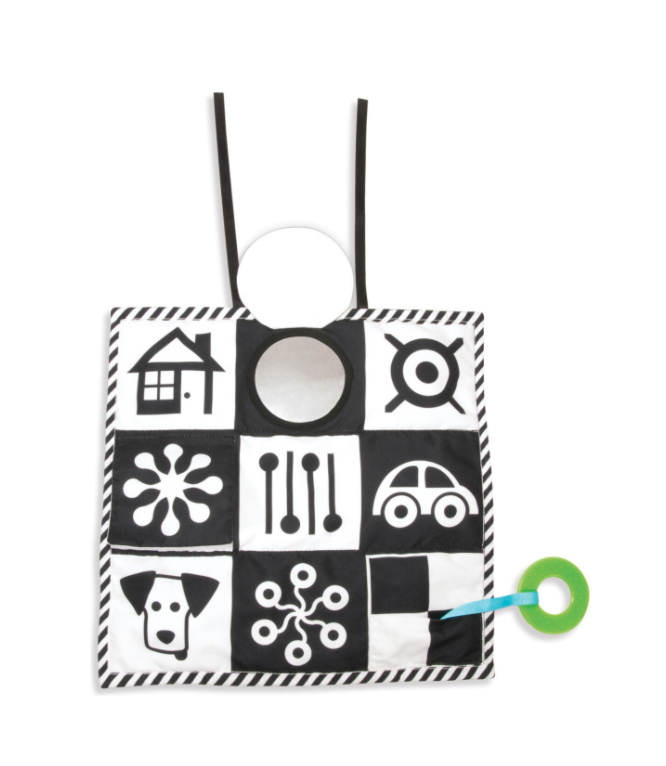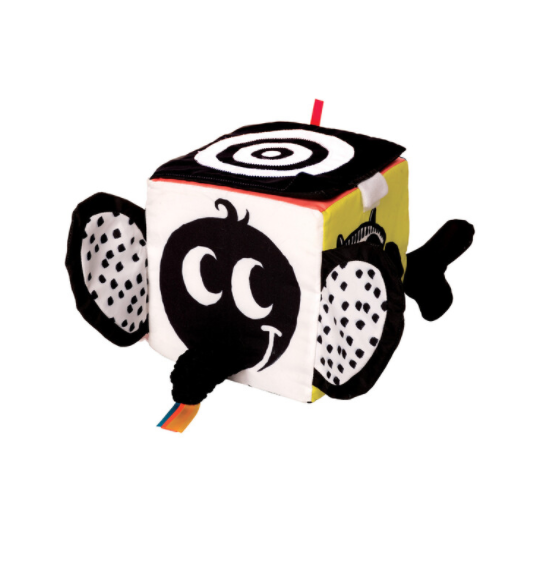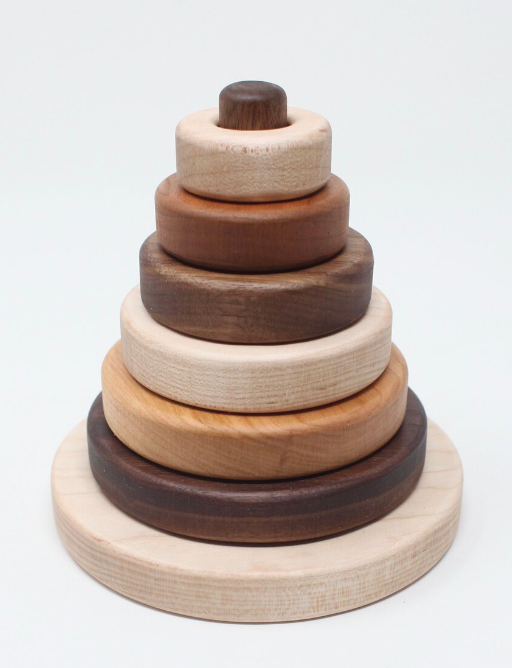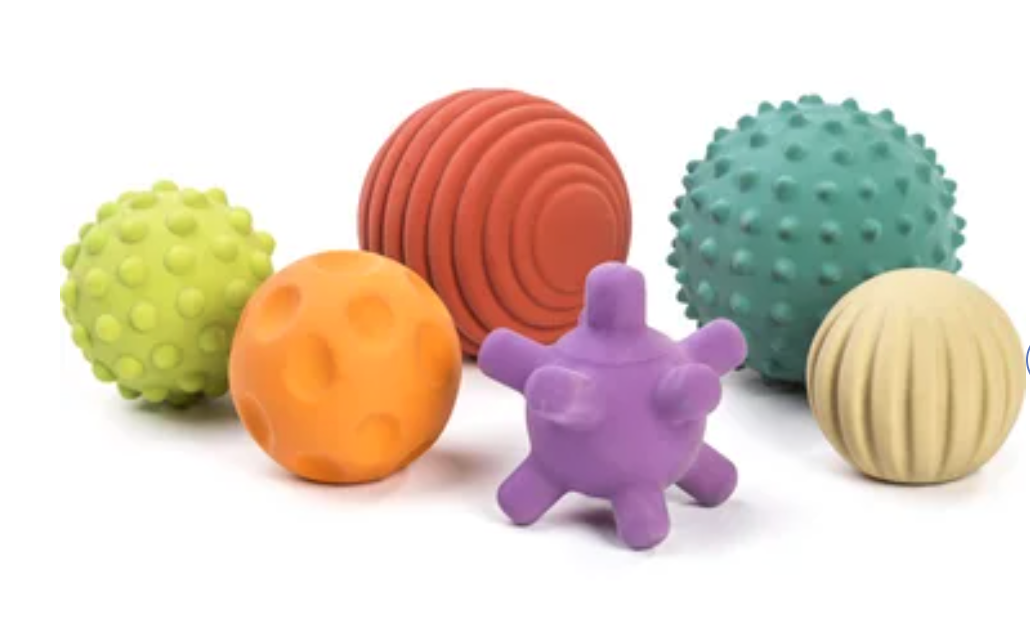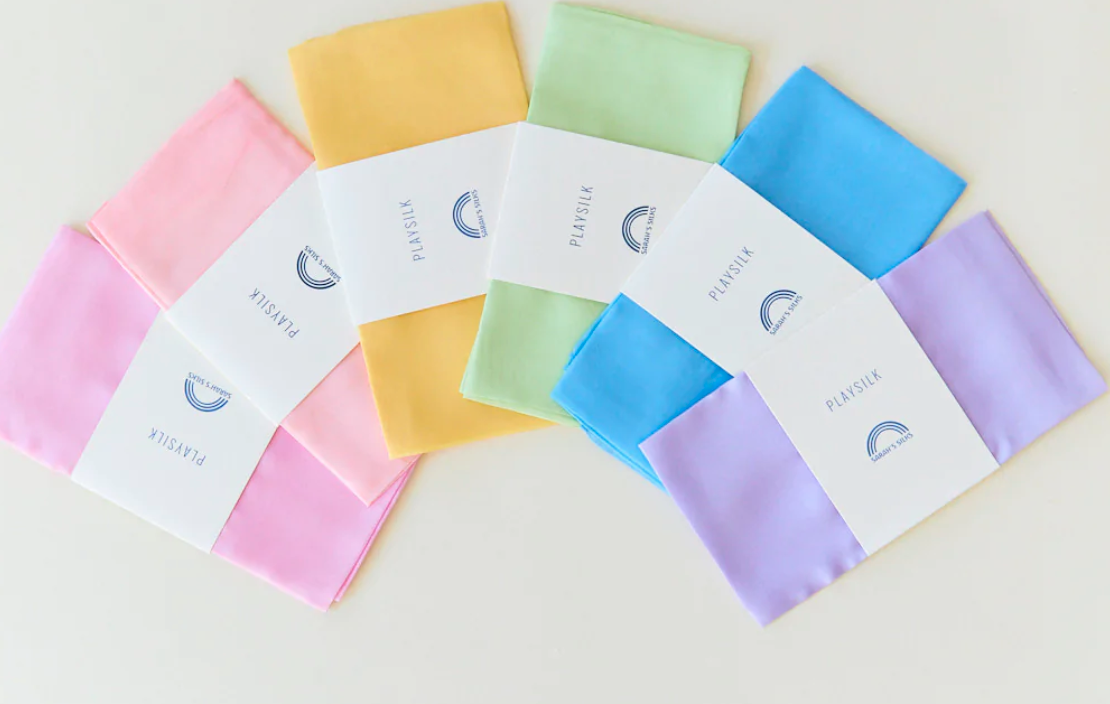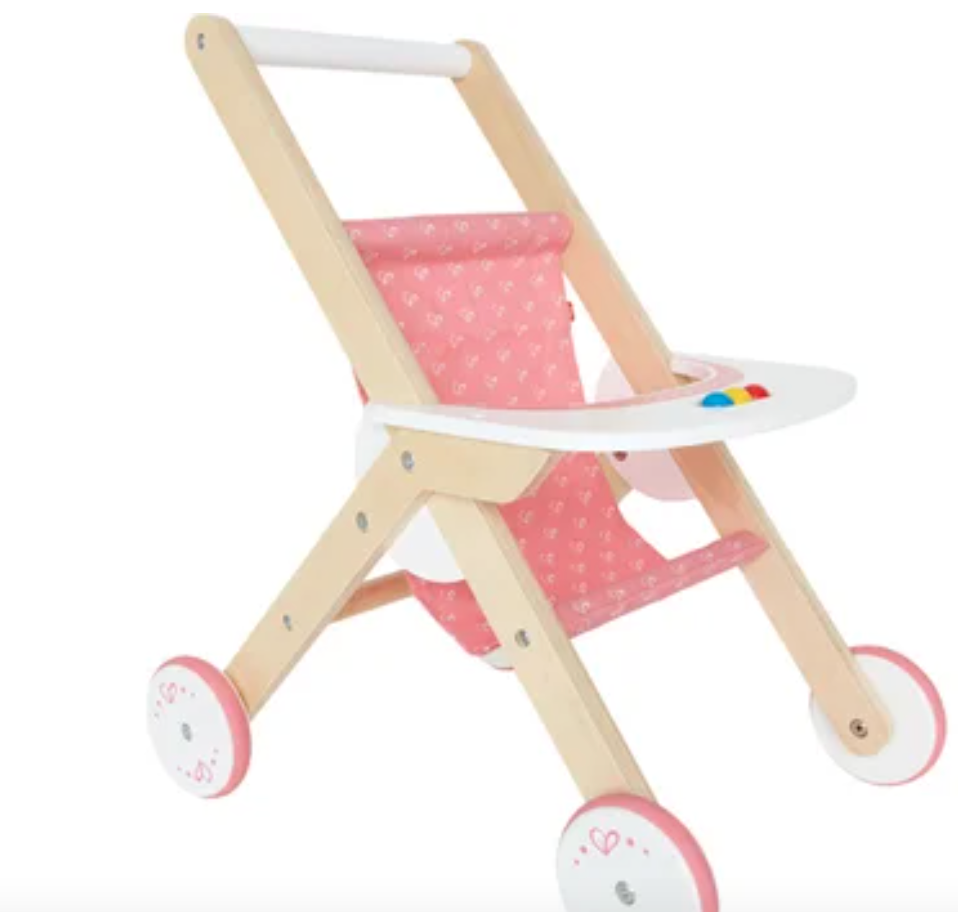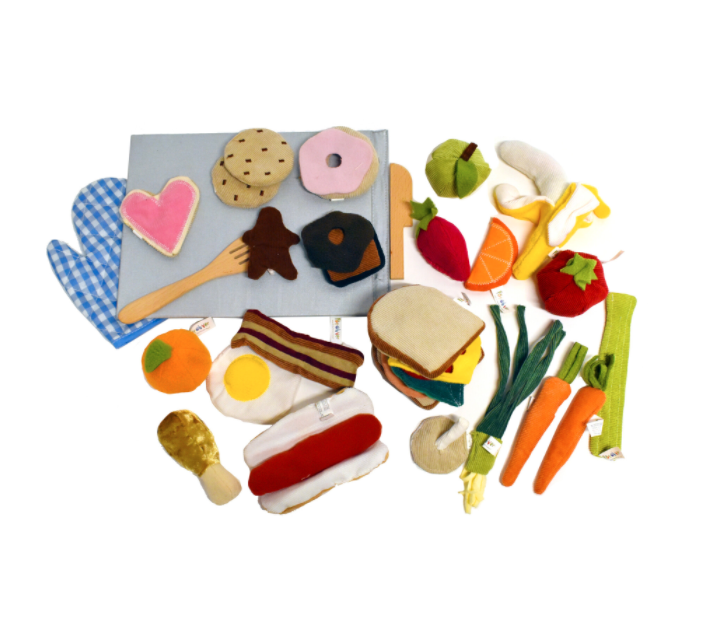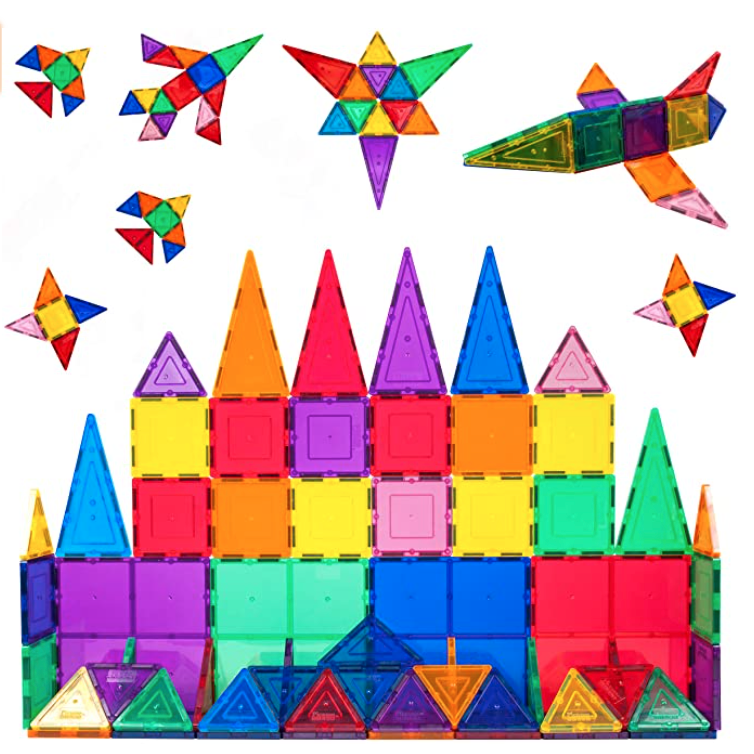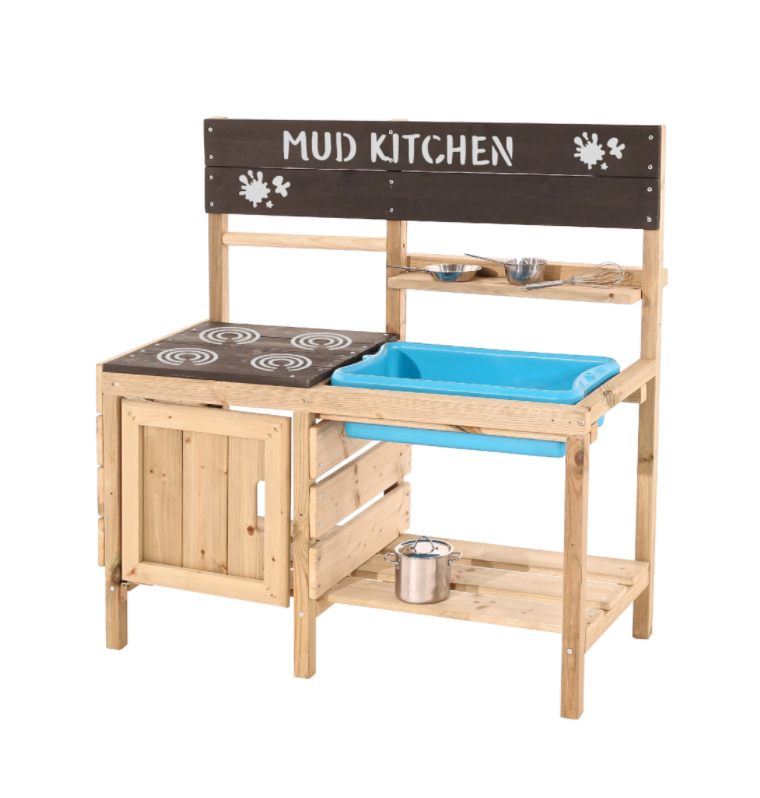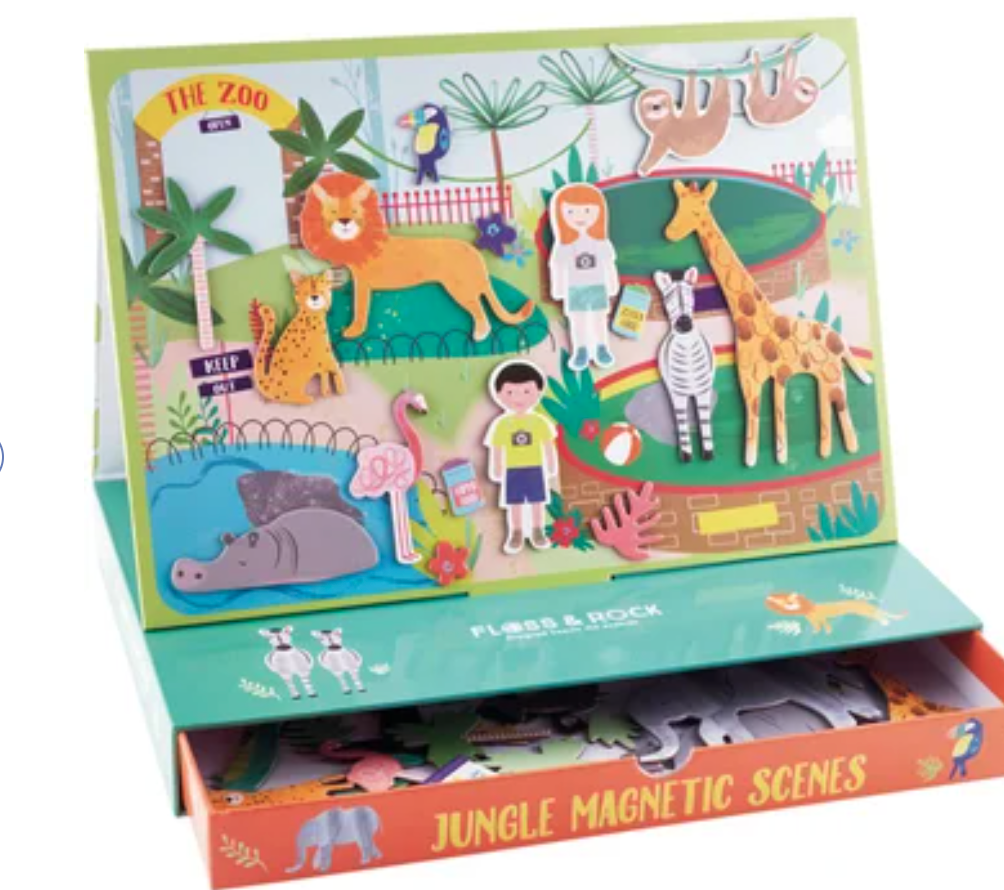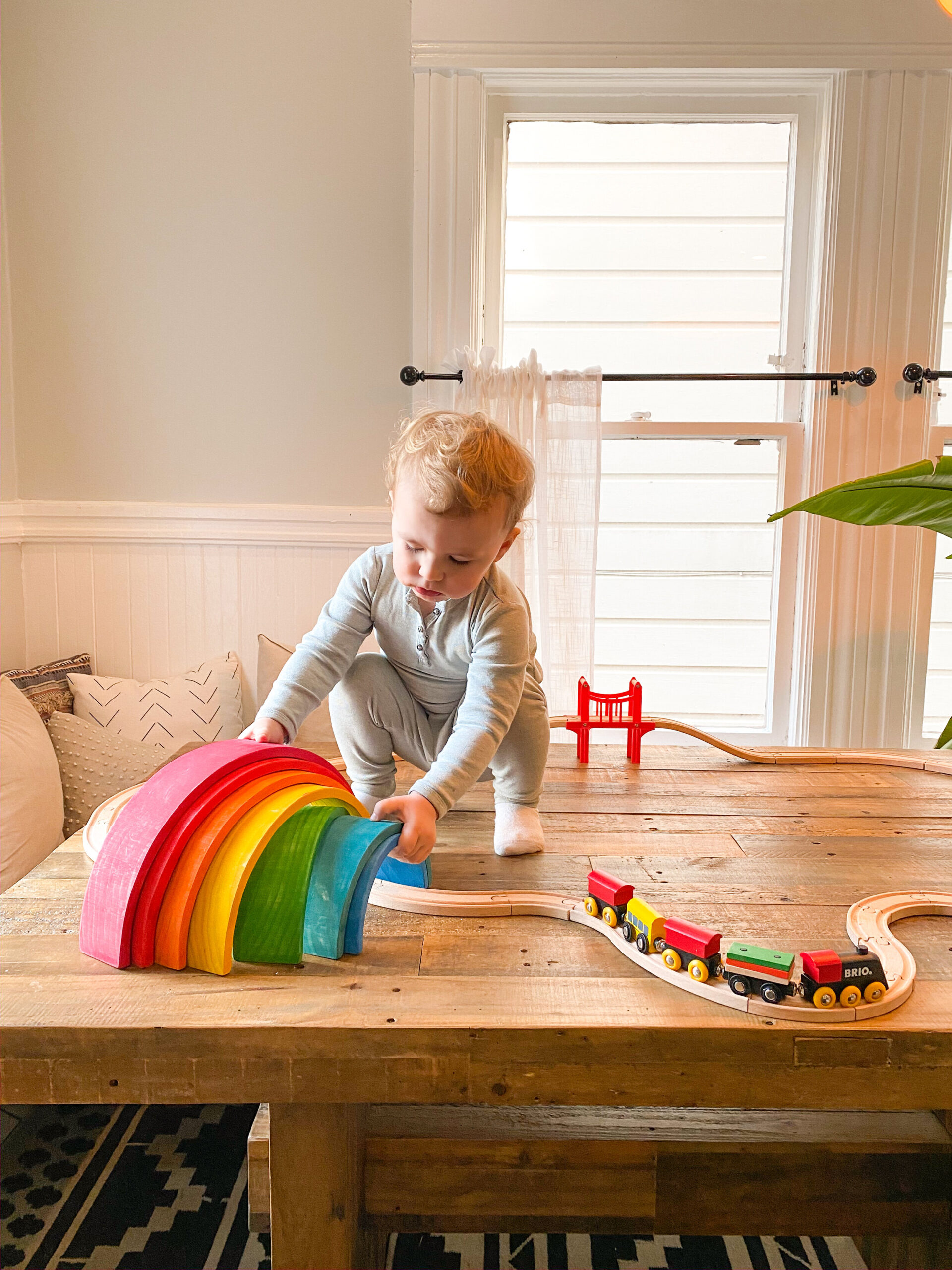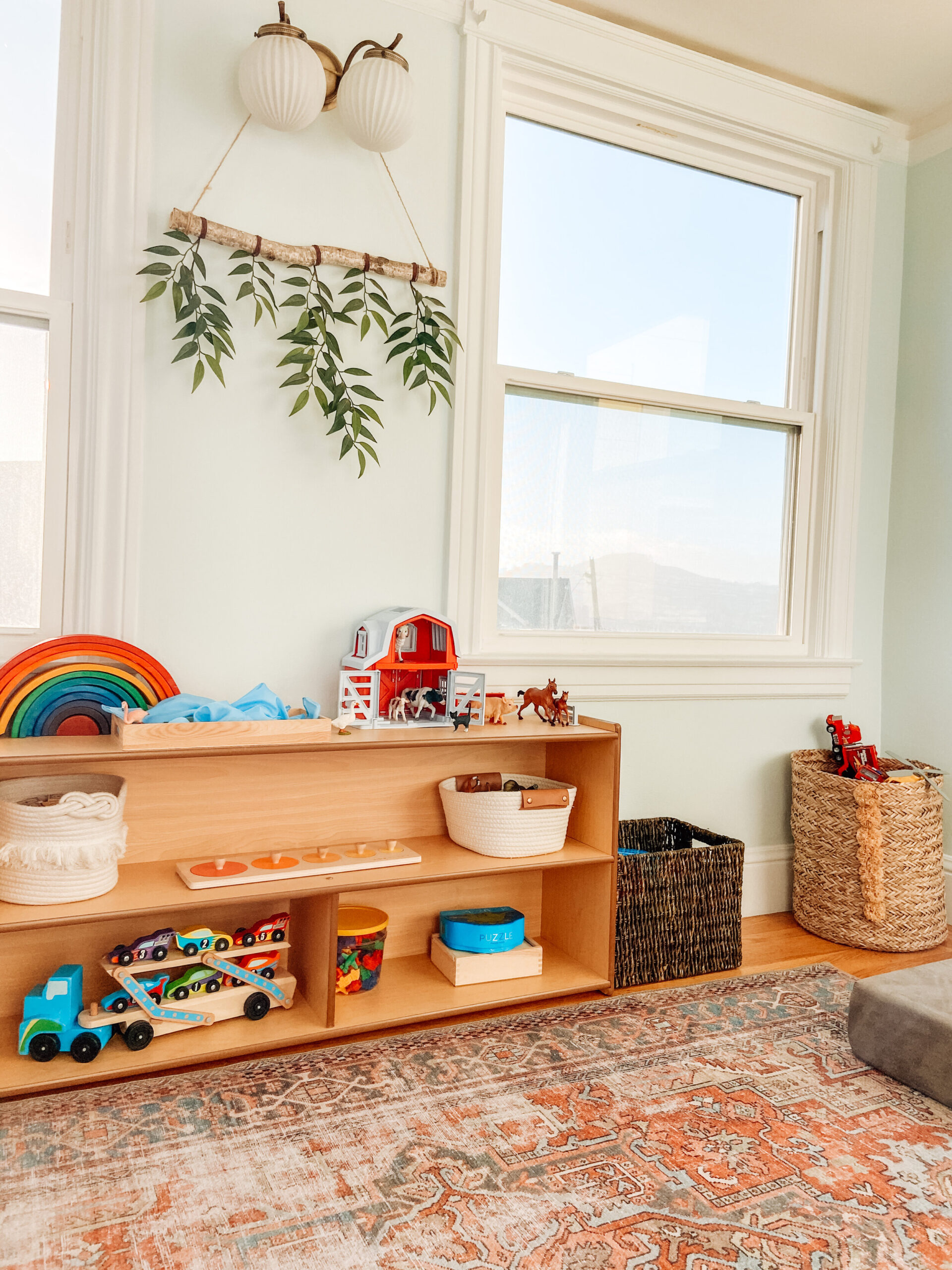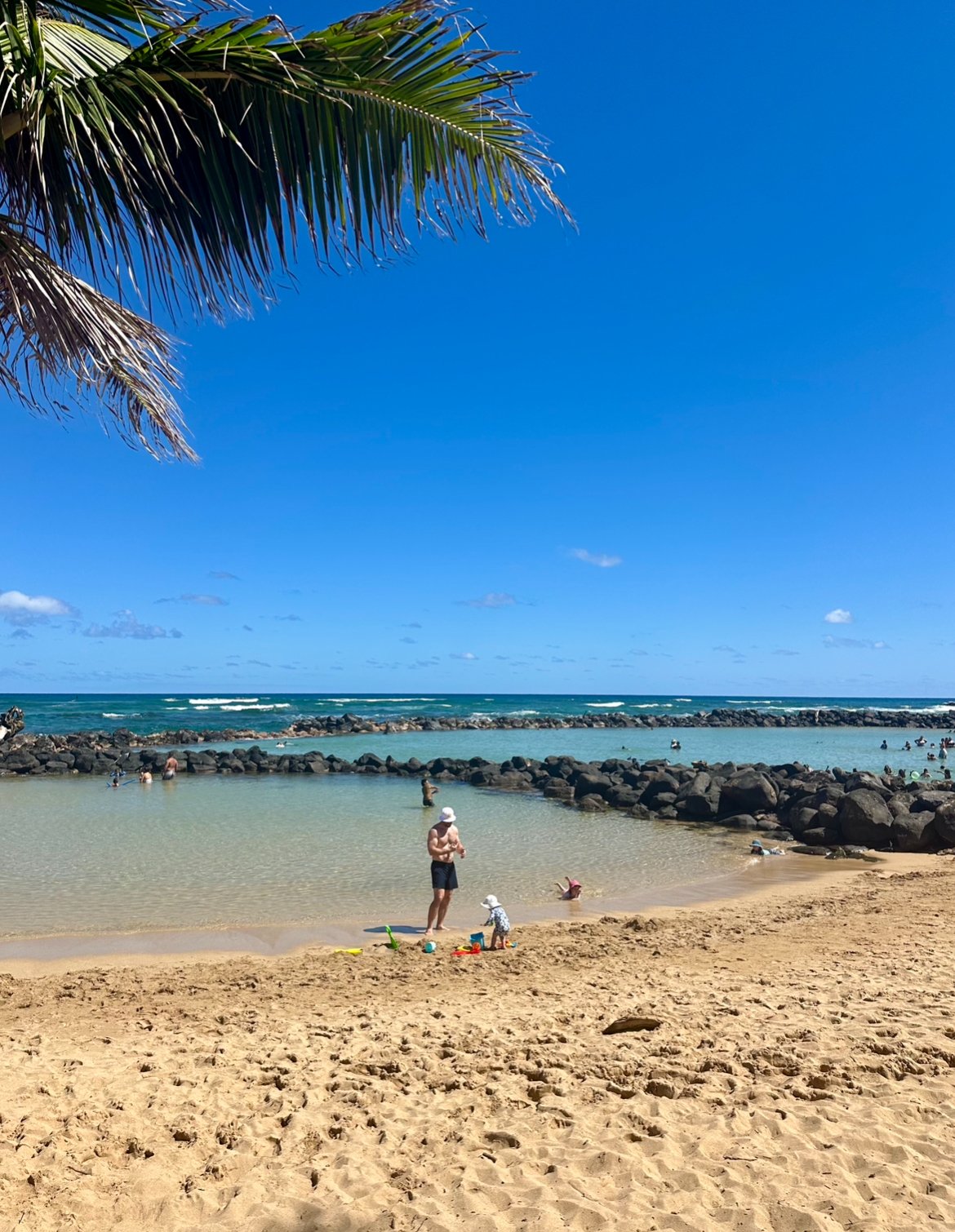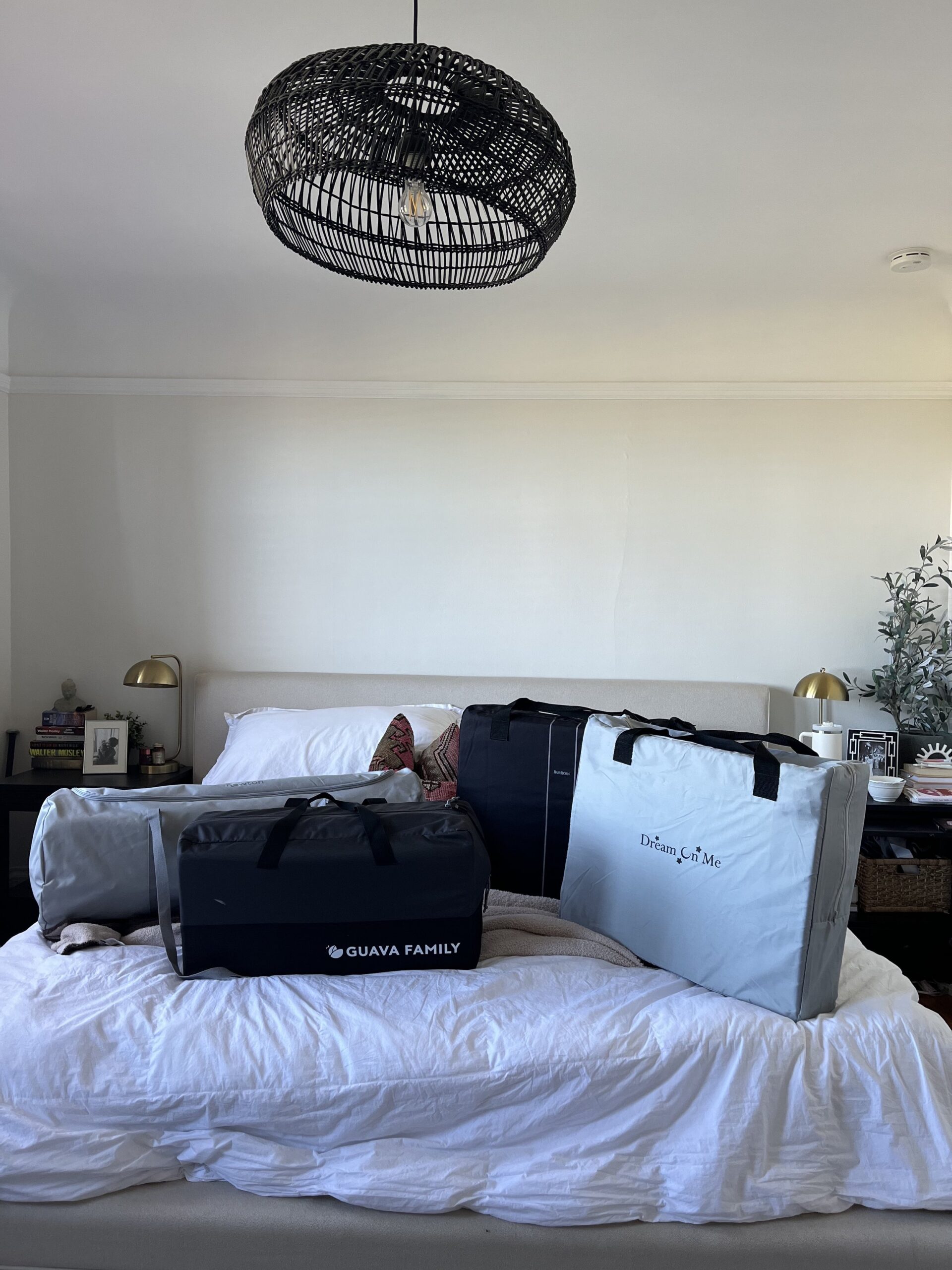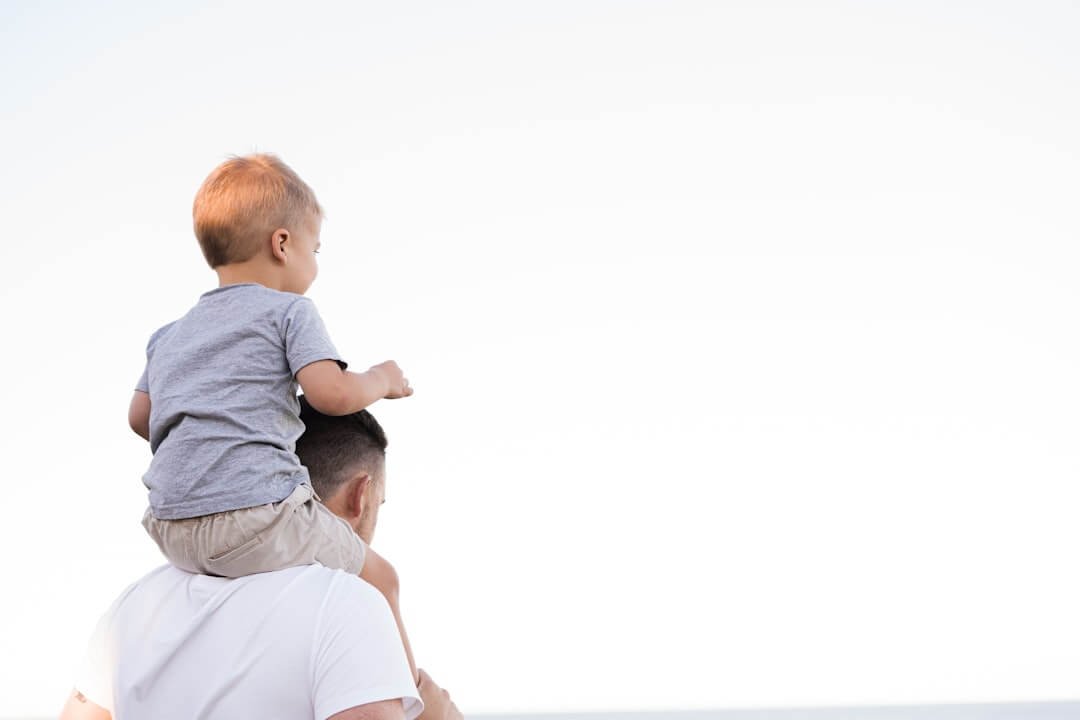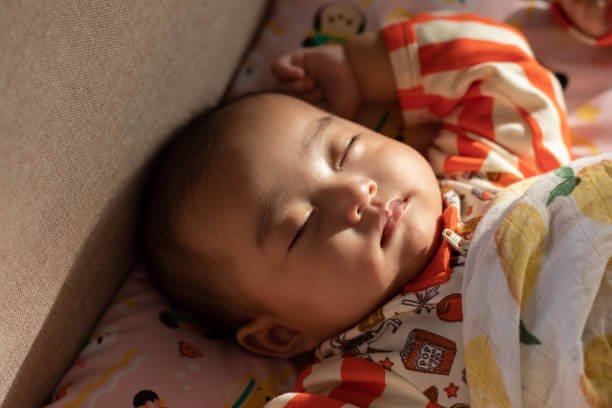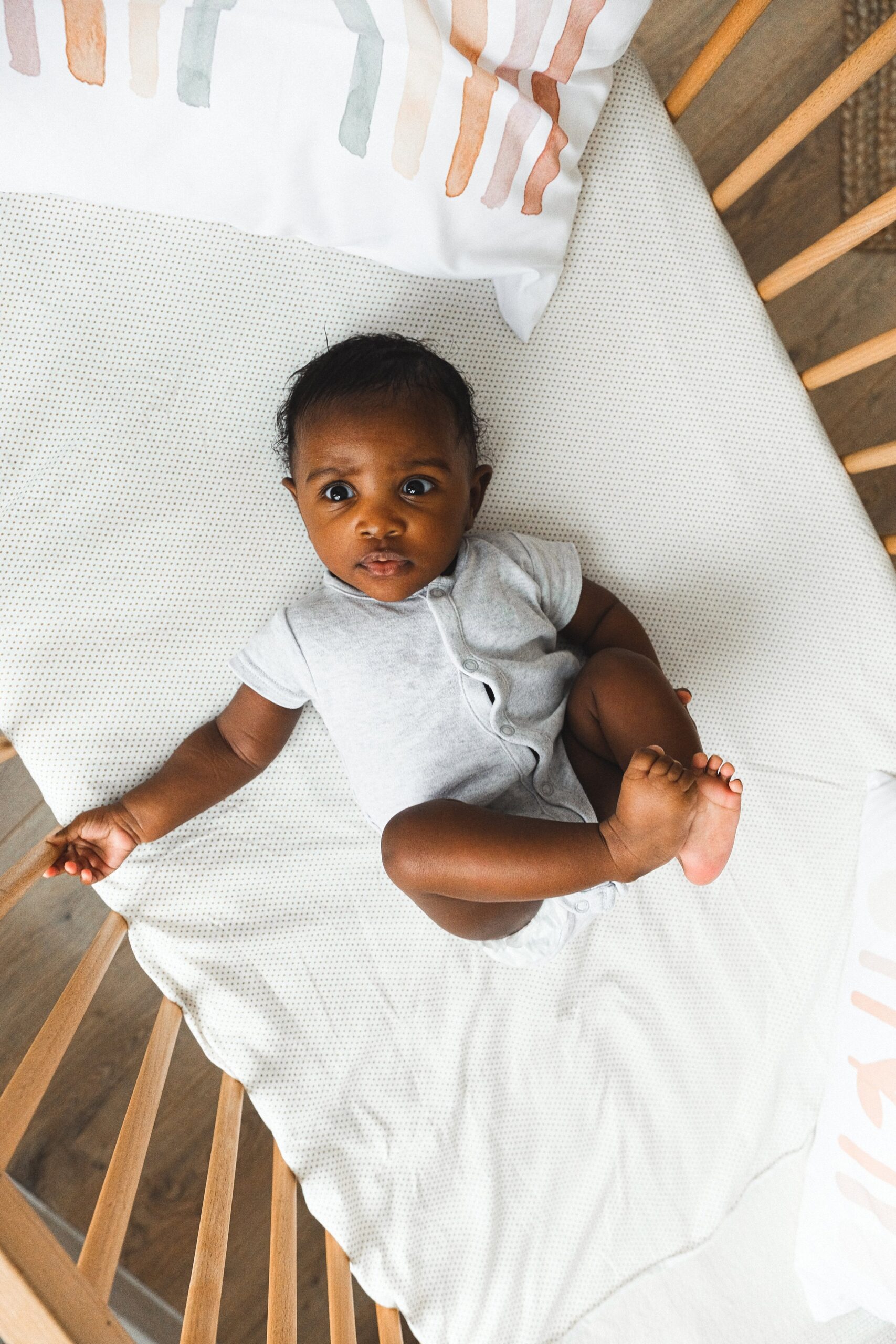I'm Rachael
Mom of 3 & Baby Sleep Expert with Big Sis Energy
& I’VE DONE ALL THE RESEARCH FOR YOU ALREADY.
Better sleep for the entire family
BROWSE COURSES
hey!
Baby & Toddler Playroom Favorites
June 5, 2021
in this post:
When you first have a baby, you might envision the most beautiful playroom of high-quality wooden toys that your little one will undoubtedly play with for hours of independent fun. Then you actually have the baby and realize a few things. One, people love to give you stuff. You’ll likely accumulate WAY more crap than you ever thought possible from well-intentioned loved ones. Another thing you figure out pretty quickly is that your child may not play with the types of items you thought they would. They may prefer a few measuring spoons to that gorgeous Waldorf-inspired toy you’d purchased.
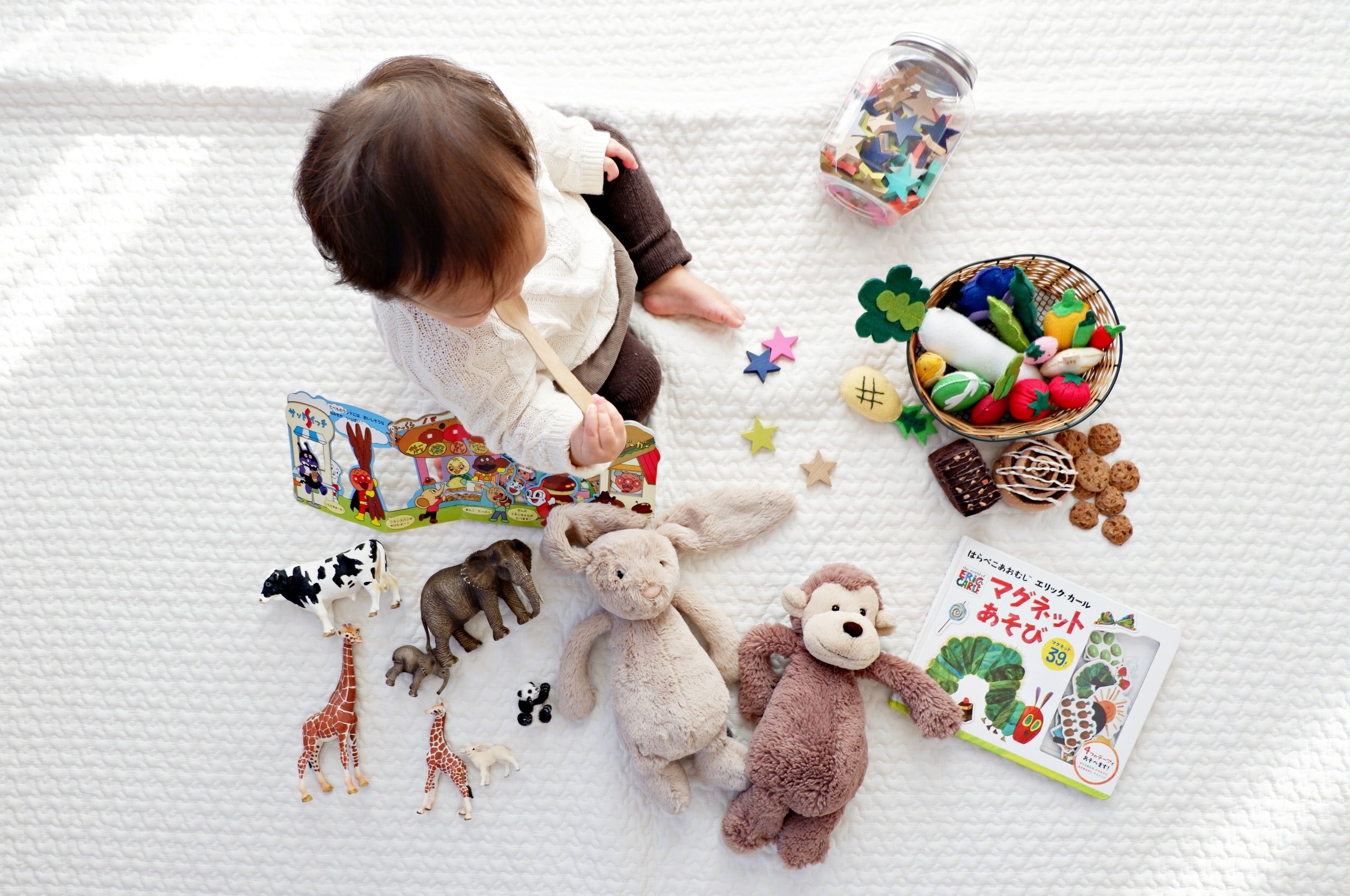
How to Build a Play Space that Lasts
Like many other things in parenthood, keeping expectations and boundaries in check can save you a lot of frustration and money in the long run. We started collecting high-quality open-ended toys when my son was first born. I made it very clear to family members that I wanted to keep our toys minimal, and for the most part that has been respected! I’d ask for “high ticket” items for birthdays or holidays- things like his bike, easel, and pikler triangle climber, or books, which he couldn’t get enough of! We wanted toys that could be used in lots of different ways and with more than just him, and things that would grow with him throughout his early years.
I knew we would love to have another baby, so I tried to keep most of our toys as gender- neutral as possible, and incorporated a range of items from dolls to cars that were available to him at all times. When searching for a toy I try and think about how many different ways it can be used. That being said, my son obviously has his favorite close-ended toys as well, like trucks and puzzles. I like to provide a mix of available options without overwhelming the space- or his brain! I personally can’t stand clutter, and studies show that fewer options actually lead to higher-quality and longer-lasting play! So you really don’t need a lot to create a fun, engaging, and even beautiful playroom for your baby and toddlers.
You definitely don’t need a dedicated “playroom” in your home to get your child the most out of their play time. In fact, little ones are hardwired to seek us out. They want to be close to us all the time! I’ve found that creating play “zones” in our house is really helpful, because no matter where my husband and I are, there are things for our kids to do. We’ve decided to use our main-level dining room as a playroom. This allows the kids to play independently while we’re in the kitchen cooking or have guests over sitting in the living room. It just creates a more child-friendly atmosphere. Since I love a nice-looking aesthetic we use baskets for toys that aren’t in constant use, and display very few on minimal-looking shelves. This creates less visual clutter and overwhelm for everyone! Upstairs we also keep a few toys in the kids’ bedrooms, but not a lot! The bedroom is where most of our books are kept, plus some quieter activities like building blocks and pretend animals/ dolls as well as a few puzzles.
Now that I have 3 kids I’ve had to rearrange a little bit. The art supplies (like scissors and markers) can’t be left out within the baby’s reach. The climbing structure (we have a pikler triangle) had to be moved. When you have more than one child sharing the play space, try and tailor it to the younger child to be sure everything is safe. If you have an older child sharing space with a baby or a toddler, show them where and how they can access things like art materials or other items they might not want the baby to touch.
When choosing which toys to purchase, ask for, and display in your home, remember that less is more. Research confirms that when young children have too many options available, the play is not as rich, independent, open-ended, creative or long lasting. Plus, visual clutter can contribute to increased overwhelm and anxiety not only in our kids but us, too. Just because we have kids doesn’t mean we can’t strike a balance between our home feeling kid-friendly and serene and comfortable for adults as well.
Why are Open-Ended Toys Important?
The benefits of open-ended materials for your child are endless. When picking out a toy for your child, think about whether or not your child will have to DO something to play with it. Can they manipulate it, move it around, build with it, or pretend with it in a few different ways? Or do they just push a button and the toy “works” FOR them? As much as you can, try for the former. We want our children to engage with the toys rather than be passive observers, letting the toys do it all. Most battery-operated toys will be more passive rather than encouraging active, engaging, open-ended play opportunities. Open-ended play is the work of childhood, and it:
-
encourages use of imagination and creativity
-
promotes more independent play
-
enhances confidence and natural curiosity
-
requires patience, problem solving, and builds resilience in the face of frustration
-
can last a much longer time than close-ended tasks
Why Should I Rotate Toys?
As I stated above, less is more! You really only want to have a few options out at a time. The rest can be stored in bins, baskets, or cabinets if you want to allow it to be used from time to time or if you know your child will go for it every day. For example, I rotate the toys displayed on our shelves, but my son knows his train tracks and magnet tiles are ALWAYS available in the baskets, and he knows his puzzles are always in the cabinet. You don’t have to display everything nor do you need to put everything away or rotate on a strict schedule. Find what works for you and your child! Read more about toy rotation from the Montessori Method here. When thinking about what to have available I like to think in terms of categories. Categories I always want to have options available for are:
-
things to build with
-
things for pretend play like dolls, figurines, play food, etc.
-
loose parts play (age appropriate to avoid choking hazards)
-
1-2 close-ended tasks like nesting blocks, puzzles, beads/ lacing etc.
-
something creative like an art option, musical instruments, etc.
-
push/ pull items like vehicles
-
books
-
gross motor items like balance board, balls, etc.
-
outdoor items are always available (chalk, bubbles, scooter or bike, etc.)
Best Toys for Each Age Group
Birth-3 Months: For newborns, less is more. You don’t want to overstimulate your little baby, and they can be really content just laying on the floor, observing shadows and light, exploring their hands, etc. You don’t even need a fancy play gym- a blanket works just fine for tummy time! If you do want to use a few toys for your newborn, think simple. Newborns may enjoy something like black and white books, but really they enjoy seeing your face and hearing your voice the most! You’re their most favorite toy, mama (and dada!).
-
get outside as much as you can
-
sing and talk to your baby
-
make eye contact with your baby often
-
narrate things like diaper changes
-
give your baby massages
3-6 Months: Babies at this age are becoming more aware of the world around them and can start grasping at toys and engaging with them more. They’re becoming more aware of themselves as a separate being and will enjoy exploring different textures and materials. They may enjoy:
-
shakers and rattles
-
a play / activity mat
-
grasper toys
-
soft books
-
mirror for tummy time
-
crinkle toys
6-12 Months: Babies at this age are on the move! There’s so much happening developmentally during this phase. They have more physical control of their bodies, so choose items that will encourage all their new moves! They’re also developing object permanence, so things they can hide and seek will be extra fun. Try:
-
sensory balls of different materials, weights and textures
-
baskets and (safe) loose parts for emptying and filling
-
play silks for hide and peek
-
empty bottles/ boxes
-
stacking towers
-
soft blocks
-
board books
-
simple instruments
12-18 Months: This stage is when your baby is starting to really exert some independence. It’s all about exploration! They’re more physically aware and will enjoy things they can push, pull, and climb. They’ll also be fascinated with items that help them with their new-found coordination. Your toddler may love:
-
building blocks or duplo’s
-
loose parts like wooden rings, coins, spools, etc.
-
containers and lids
-
push-along toys like pretend strollers, lawn mowers, vacuums, etc.
-
vehicles
-
nesting toys
-
dolls
-
pretending toys like play food/ play kitchen
-
simple puzzles (more of a close-ended task, but still fun!)
-
gross motor toys like climbing structures, swings, couch cushions, balance boards, etc.
18 Months- 2 Years: Your toddler is getting even more practice with their motor skills and may start to enjoy playing pretend by role-playing. They’ll likely enjoy:
-
pretend scenes like a doll house, barn, etc.
-
animal figurines, dinosaur figurines, little dolls, etc.
-
pretend “home” play like play kitchen, baby stroller, or pretend baby crib, costumes, cleaning supplies etc.
-
loose parts & sorting boxes
-
building blocks
-
train tracks
-
magnetic tiles
2-3 Years: By this age, less is really more. The more open-ended the better because your toddler is able to pretend and escape into their own little world. Their creativity is blossoming! All of the above toys are still great, and your toddler can now engage with them in a whole new way. Outside, unstructured play is hugely important as a part of the daily rhythm for your day. Toddlers/ preschoolers will also enjoy art and creative projects that allow for more fine-motor practice like painting, cutting scraps of paper, threading beads, etc.
Our Most-Loved Items
Honestly, lots of our favorite items have just come from IKEA! We have the KALLAX cube organizers in the playroom (was supposed to be our dining room- oh well) and my son’s room. They also have great cube organizers to fit in them that are really beautiful and inexpensive! We use them as bookshelves and toy storage/ display. I like to keep most of the shelves open, though. Children will look at a row of boxes or bins and not be super inspired to play. But if you keep a few toys within their sight, and even better, arrange them in a “play invitation” scene, they are much more likely to go over and engage!
We have the IKEA play Kitchen as well, and love it! Our favorite thing from IKEA is the Sensory Table– we have 2! The ideas for this table are endless. It can be a Lego or art table, a table in a play-kitchen area, or a spot for sand, water, or other sensory play. Some of Otto’s favorites are “animal baths” and “truck wash” using some water and baby-safe soap, sponges, towels, etc.
For Noe, I decided to invest in Lovevery subscription boxes so that I could share my thoughts with you all. Honestly- I love them. I considered signing up when I had my son, but it seemed SO expensive. But now that I see how good the quality is, and how we really use them every day and don’t need much else- I wish I just bit the bullet back then. If you have a baby and plan on more children, and it’s in your budget- do it! It’s so worth making the investment especially if more than one child will use them. Keep in mind that lots of groups like Facebook Buy-Sell-Trade groups as well as second-hand stores often have Lovevery toys for a fraction of the price!
Aside from our Lovevery stuff, we don’t have too much, especially not all out at once. I love doing toy rotations to reduce clutter, and have more about this in my “Play” highlight on IG!
We are currently obsessed with our new Nugget (not sponsored- I wish!). I highly recommend checking out KC at @milestones.and.motherhood for her ideas on Nugget play and how to make it work if the Nugget doesn’t fit your budget right now- plus regular old couch cushions also work just fine! There are also several other brands out there that ship internationally and are a bit more economical, like the Blocksy.
Otto has always loved trucks and vehicles so we do have a fair amount of those- all different types. He also uses his train tracks and magnet tiles every single day. When looking at some of these items the price tag can seem like a bit much, I know. But if something will be used nearly daily for years, think about the price per use. A $100 train set ends up being more like 25 cents per use over a couple of years.
I’ve rounded up some other favorite toys and storage options below. For more plus some of our favorite books, you can check out my Amazon Store!
For more on making sustainable and affordable choices, listen to Episode 20 of Mom Friends the Podcast!
Featured
Choosing the right time to leave your baby is a super personal choice. Some babies and moms feel comfortable at a much earlier stage than others and finding the right time for you is important. These are my tips for prepping to leave your baby overnight.
Travel crib and play yards can provide a safe and comfy space for your little one to hang out or sleep. But which travel crib is best? In this blog post, Rachael reviews 6 different popular play yards and compares each one based on different criteria…
binge reads
We think you'll love these
You deserve to the
baby stage, not just "survive it."
And you DON'T have to sacrifice your values, ignore your instincts, or force yourself to follow a method you don't align with just to get your baby back to sleep.
I’m here to help you create a restful, sustainable sleep environment that honors both your baby’s needs AND your own (without the stress OR the guilt!) because, no, you don’t have to choose between the two.
enjoy!
BABY SLEEP COURSES →
BABY SLEEP CONSULTS →
Wish you could help your baby sleep better without resorting to sleep training? Download my FREE guide to a good night’s sleep and learn 8 simple, science-backed tips for supporting your child’s needs.
Traditional sleep training methods don’t have to be your solution to better sleep.
SLEEP TRAINING ISN’T THE ONLY WAY TO GET GOOD SLEEP
Hey, I'm Rachael and Hey, Sleepy Baby is for parents who want to get their nights back, without sleep training their babies.
NO ONE TOLD US POD
explorING the untold truths of parenting

